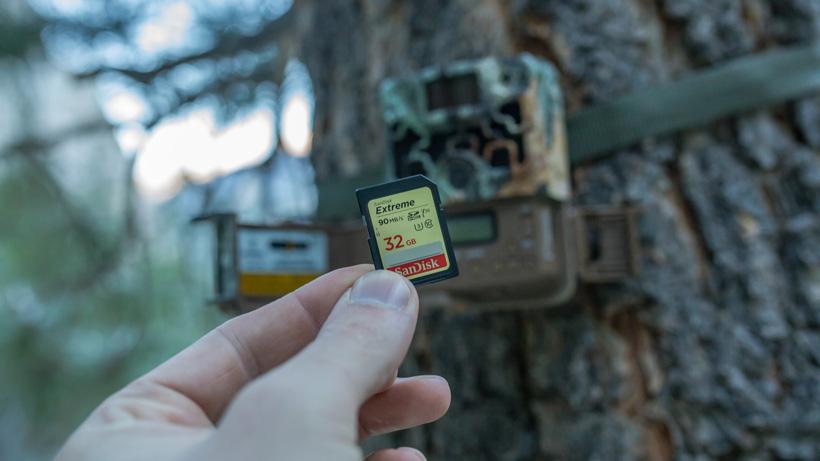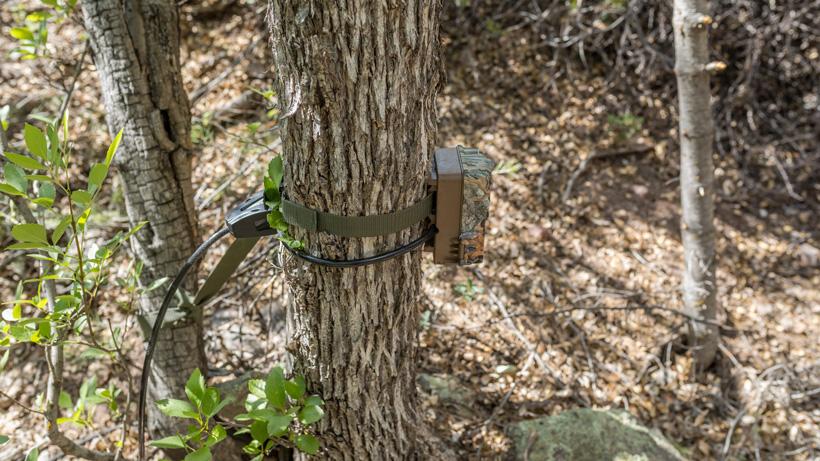





Setting up trail cameras sounds simple enough right? Until you’re flipping through your pictures and you can’t tell the difference between a doe or a 170-inch buck because the heads are out of frame. Anybody that has set up trail cameras can probably think of these exact instances where you’re walking back to your truck cursing at every rock and stick that gets in your way because you had trail camera malfunctions.
I’ve narrowed it down to three common mistakes that are typically overlooked when it comes to setting up trail cameras.
The easiest and least talked about mistake is not re-formatting your SD card in your trail camera. When you don’t reformat your SD card in your trail camera you are running the risk of not having the pictures saved properly. When you use SD cards on different devices it will have formatting that matches those different devices, which can adversely affect the communication between your trail camera and SD card. Ultimately this could leave you with no saved pictures at all or unreadable files. Re-format every SD card, it is better to be safe than sorry.
Trail camera placement is another common mistake, and I’m not talking about finding good high traffic areas. I’m talking about the simple basics of properly wrapping a trail camera around a tree. Angles are everything. If you have the trail camera set too high up the tree you’re only going to get pictures of ears and antlers. If the camera is set too low, you’ll have a lot of pictures of legs.
A rule of thumb I like to use when the ground is completely level is to put the camera about waist high on the tree. Which is around four feet off the ground for some of you who may be taller or shorter. This four-foot rule changes though as the landscape changes. If the tree you’re hanging the camera on is slightly lower in elevation than the area you wish to capture, you’ll need to move the trail camera higher up the tree so your eye level with the animal. If the tree’s location is higher in elevation than that area you expect the animals to be, you’ll want to have that camera a little bit lower on the tree.
Assuming that the settings on your trail camera are good to go is a mistake I hear about all the time and a mistake that can be the costliest. There is nothing worse than realizing the trail camera was in video mode for the last couple months instead of taking photos.
Capture mode is pretty simple, do you want photos or videos? Keep in mind that video files are bigger and will eat your memory card a lot faster, plus your camera will be working harder recording video causing battery life to deteriorate.
Photo burst and photo delay are essentially how many pictures you want taken at a time and how long of a delay you'd like between those bursts. Why it's important to always check this is because every camera setup is different. For camera setups over game trails, you want higher burst and less delay since the animals will be walking through quickly. Whereas camera setups over mineral sites the animals will be in front of the camera a lot longer meaning you have a higher chance of getting a picture so you can lower the photo burst and increase delay time.
For those of you who are unfamiliar with sensor sensitivity, it's basically what triggers the camera to take a picture. Every camera's sensor sensitivity is different and I recommend you test the camera before you put it up so you know if you have to change the settings. This will help eliminate those unwanted pictures triggered by tall grass blowing in the wind, which happens a lot.
Most cameras will give you choices for megapixels you'd like the photos to be taken in. Higher pixels equals higher quality, which takes more space on your memory card. Lower megapixels equals lower quality but takes less space on your card. The decision is yours. The best advice I have is test them and see what you like best.
Time and date seem like a simple thing, but a lot of people get wrapped up in all the other features trail cameras have that they forget to set the time and date, which could single-handily be the most important scouting tool beside the actual picture itself. You don’t want to be guessing if that buck was walking by in the dark at sunrise or at sunset all because you didn’t set the time on your trail camera correctly. If you forget everything else I’ve said here, at least remember to always check your trail cameras time and date!
At the end of the day, these are only pictures and you shouldn’t get too worked up if you make a couple of mistakes. Learn from them and move on. Trust me, it only takes a couple times of being irate at your trail camera to ensure that mistake never happens again. There are no givens in hunting, not even something as simple as putting up trail cameras, but that’s what keeps us hunters coming back for more.